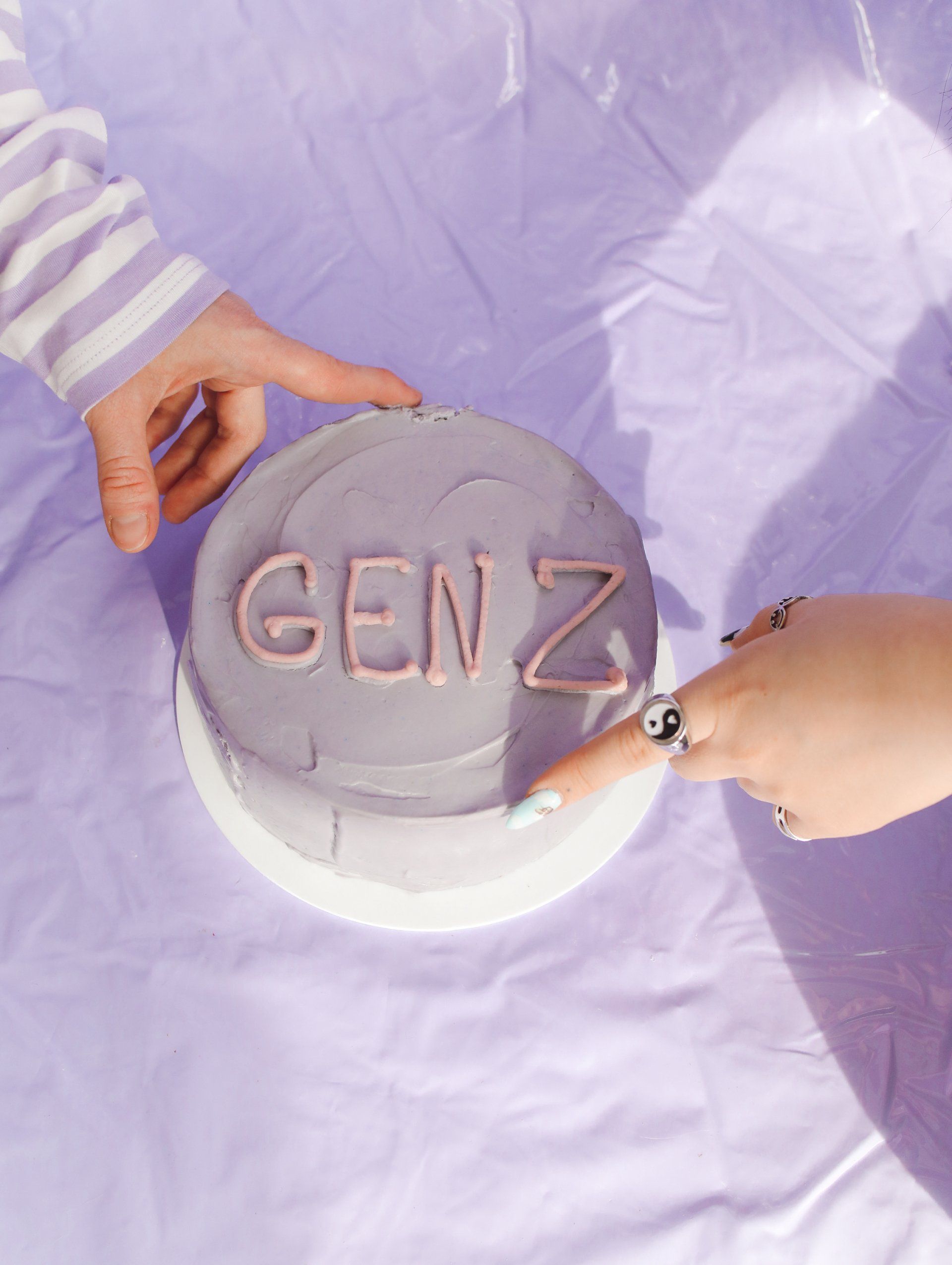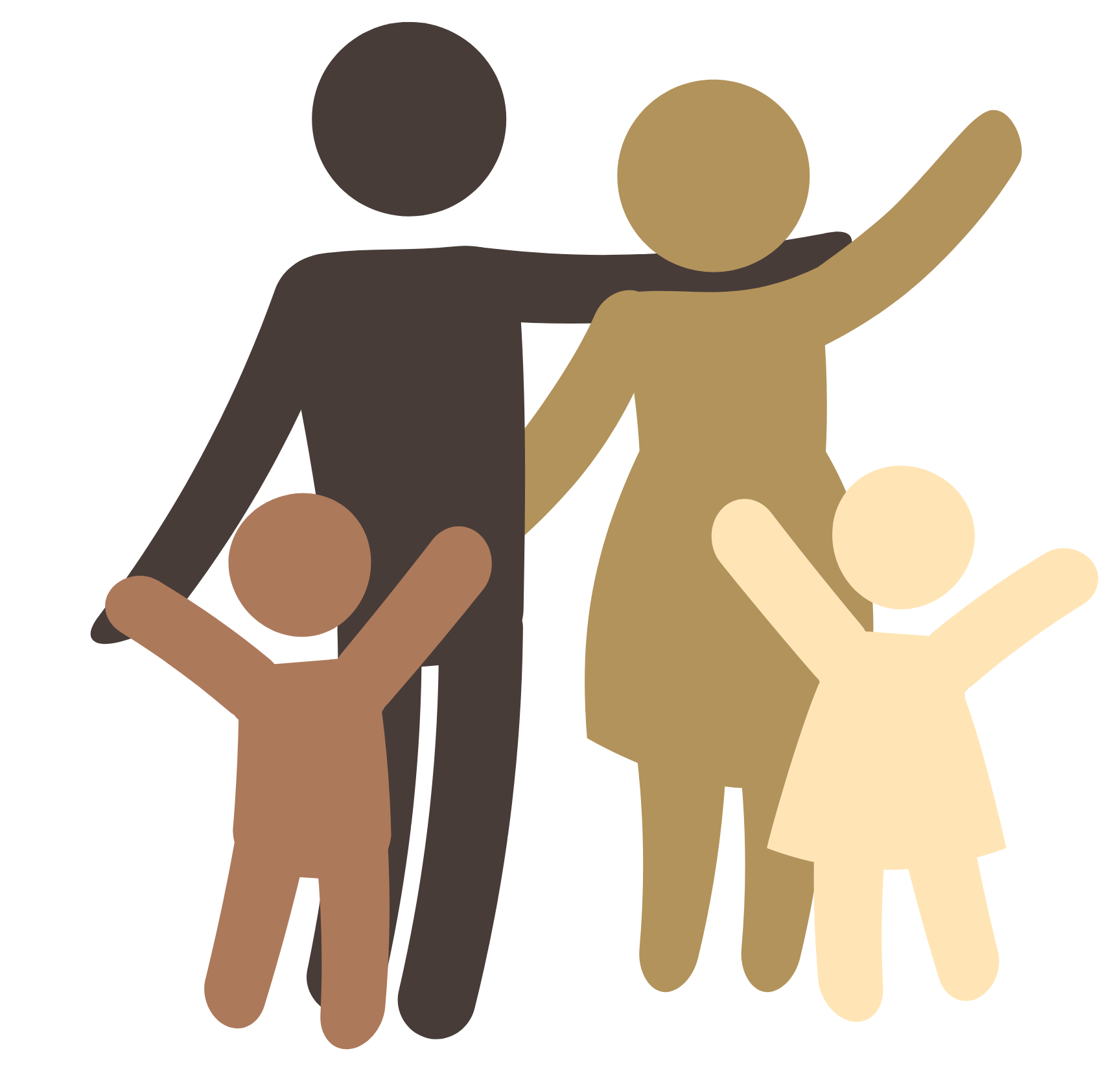
- Understand the reasons why an organization needs to recognize trauma in staff and clients
- Identify organizational practices and interventions with staff and clients needed to address (multi—generational) trauma
- Understand the critical relationship between organizational practices and services delivery
- Identify organizational changes needed to support staff in their implementation of trauma responsive practices
=======================================================
9:00 Welcome, Outcomes and Process, Organizing for the day
9:15 What is the Federal Administration for Children and Families (ACYF) Children’s Bureau (BC) telling states?
Directions: (1) Read pages 2 – 4 (5 minutes) (2) select a group reporter (3) then answer the following question (5 minutes):
What is the federal CB saying to child welfare providers?
________________________________________________________________
________________________________________________________________
9:25 Large group sharing
What the Federal Administration for Children and Families (ACYS) Children’s Bureau (CB) is saying to states:
________________________________________________________________
________________________________________________________________
The Federal Administration for Children and Families Children’s Bureau on April 17, 2012 issued Information Memorandum ACYS-CB-IM-12-04 which requires states to include in their health oversight plans a description of how they will screen for and treat trauma associated with removal into foster care (group and residential care), including a complete trauma history
The Federal Administration for Children and Families Children’s Bureau on April 17, 2012 issued Information Memorandum ACYS-CB-IM-12-03 which defines the issues surrounding psychotropic medication use by children in foster care, highlights available resources for States to consider when developing their Annual Progress and Services Report (APSR), and encourages increasing access to clinically appropriate screening, assessment, and evidence-based interventions for foster children with mental health and trauma-related needs.
Excerpts from ACCY – CB 4.14.2012 Memo to states:
Traumatic Impact: Traumatic events can elicit mental and physical reactions in children, including hyper-arousal and dissociation. If these acute “states” are not treated after children experience trauma, they can become chronic, maladaptive “traits” that characterize how children react in everyday, nonthreatening situations (Perry, 1995).
V. Requirements and Policy Opportunities
Titles IV-B and IV-E of the Social Security Act and the Child Abuse Prevention and Treatment Act (CAPTA) have historically included provisions that promote the well-being of children. Title IV-B programs are intended to enhance the safety, permanence, and well-being of children who are in foster care or are being served in their own homes. The title IV-E foster care program includes requirements to address a child’s well-being, such as in the areas of health and education. CAPTA provides funding for prevention, assessment, and treatment programs to increase the well-being and safety of children who have been abused or neglected. Some policy requirements and opportunities in existing policies related to social and emotional well-being are listed below:
- Trauma Screening and Treatment: 2011’s Child and Family Services Improvement and Innovation Act requires States to include in their health care oversight plans a description of how they will screen for and treat emotional trauma associated with maltreatment and removal for children in foster care (section 422(b)(14)(A)(ii) of the Social Security Act). Identifying the trauma-related symptoms displayed by children and youth when they enter care is critical for the development of a treatment plan. It is also important to have a complete trauma history for each child. Although children come to the attention of the child welfare system as a result of a specific allegation of maltreatment, abuse and neglect are chronic in nature. Child welfare workers should have an understanding of the multiple types and incidences of trauma children have experienced, beyond just the event that precipitated child welfare involvement. Conducting comprehensive functional assessments according to a standardized schedule (e.g., every six months, or every time a child moves to a more restrictive placement setting) can help caseworkers and administrators gauge whether or not treatment strategies are working to decrease children’s symptoms. States could consider integrating trauma screening into the regular screening activities taking place under EPSDT in order to meet the new requirement.
- Child welfare and mental health systems can develop the capacity to install, implement, and sustain these evidence-based and evidence-informed interventions by using research to identify effective and promising interventions that meet the needs of the specific population to be served; making needed adaptations to bring the interventions to scale within the child welfare system, developing an awareness of principles of evidence-based practices among staff at all levels; and reorganizing infrastructure to support implementation fidelity and further evaluations of these practices and interventions.
- Evidence-based and evidence-informed practices have been developed to address the most common mental health diagnoses, trauma symptoms, and behavioral health needs of children and show measurable improvements or promising results. These interventions show measurable improvements or promising results in decreasing emotional/behavioral symptoms; diminishing depression, anxiety; increasing the ability to self-regulate; improving physical health; and helping traumatized children and youth form and maintain healthy attachments. There are also evidence-based and evidence informed interventions geared toward improving outcomes related to youth skill development, education, and employment. (Job Corps and Big Brothers/Big Sisters are examples.) Many of these practices are available but have not been brought to scale or targeted to the foster care population even though they have been shown to improve functioning. Others have shown promising results, and should be evaluated more broadly as they are implemented more widely.
It is important to note that many of the evidence-based interventions that improve child functioning require the involvement of caregivers and specifically target their behaviors for change as well. Caregivers need support in managing the behaviors of children who have experienced maltreatment and in providing a nurturing environment in which healing can occur. In such supportive contexts, children can learn “the value, purpose and safety of relationships” (Rees, 2010). In order to achieve better outcomes for children who have experienced maltreatment, it is essential to engage families, whether biological, foster, or adoptive, in the process of healing and recovery.
X. Strategies for Shifting the System to Promote Social and Emotional Well-Being
- Evidence-Based Interventions: Deliver evidence-based and evidence-informed interventions for the treatment of trauma and mental health disorders. When evidence-based screening and assessment indicates that children are suffering from trauma and/or mental health symptoms, it is necessary to provide treatments that effectively improve functioning. Child welfare systems will need to collaborate with mental health and Medicaid systems to build an array of evidence-based or evidence-informed interventions to improve trauma and mental health-related outcomes for children who have experienced maltreatment.
9:30 Individual exercise: In the space below, define “trauma”
(5 minutes)
I define “trauma” as _______________________________________________
_____________________________________________________________
9:35 In your work group:
- Select your first group reporter
- Share your individual definitions of “trauma” and then as a group develop a consensus group definition of trauma.
The purpose of this activity is to be sure we are all understand what we are talking about.
You will have 10 minutes. If ready early, let the Trainer know.
We define “trauma” as _____________________________________________
_____________________________________________________________
_____________________________________________________________
9:45 Large group sharing of definitions and consensus
“trauma” is _______________________________________________________
_______________________________________________________________
10:00 Trauma Response
As a group:
- Select a second reporter
- As a group, by discussion and consensus, answer the following three questions. You will have 10 minutes.
=========================================================
- What might cause trauma?
________________________________________________________________
________________________________________________________________
2. How might a traumatized person feel?
________________________________________________________________
________________________________________________________________
3. How might a traumatized person behave?
________________________________________________________________
________________________________________________________________
10:10 Sharing with large group
10:30 Beliefs behind trauma treatment
Beliefs
1. We all act to prove what we believe is true
Pygmalion effect aka My Fair Lady, Edison Classroom Study
What does this say to us?
2. All behavior is a communication
Do we stop the communications? Punish the communication or listen to the message?
3. People are doing the best they can with the knowledge, skills and tools they have today
What does this say to us about clients?
4.People coming to our agency for help (voluntarily or involuntarily) have been traumatized directly or multi-generationally
What does this say to us about working with clients?
5. We cannot force someone else to change long term. We can only force compliance today, but at what cost?
What does this say to us about working with clients?
10:45 15 minutes Break
11:00 The presence of trauma in organizations
- Select a third reporter
- As a group, by discussion and consensus, answer the following 4 questions. You will have 15 minutes.
1. What might indicate the presence of trauma in staff?
________________________________________________________________
________________________________________________________________
2. How might traumatized employees feel?
________________________________________________________________
________________________________________________________________
________________________________________________________________
________________________________________________________________
3. How might traumatized employees behave?
________________________________________________________________
________________________________________________________________
________________________________________________________________
________________________________________________________________
4. What are organizational practices, policies, procedures that might traumatize
staff?
________________________________________________________________
________________________________________________________________
________________________________________________________________
________________________________________________________________
11:15 large group sharing
11:40 Staff cannot treat clients any better than they are treated by the agency: Parallel Process for Agency and Client
What does this say to us, the organization’s leaders?
________________________________________________________________
________________________________________________________________
11:50 Three keys to trauma treatment/recovery
- Engagement
________________________________________________________________
________________________________________________________________
- Safety
________________________________________________________________
________________________________________________________________
- Empowerment
________________________________________________________________
________________________________________________________________
Noon Lunch
1:00 Organizational practices
Small group directions:
1. Select a new reporter
- As a group, by discussion and consensus, answer the following question. You will have 20 minutes
==========================================================
There are two agencies that provide the same service. You have applied to both and both have offered you the same job by title for the same pay and benefits, both the same distance from you, same hours.
In looking at both agencies, what do you look for that tells you which agency is more trauma free for its employees? For its clients? (think about policies, procedures, printed documents, manuals, forms, etc)
________________________________________________________________
________________________________________________________________
________________________________________________________________
________________________________________________________________
1:20 Sharing and discussion
2:00 Assessing Staff Trauma – PROQOL
________________________________________________________________
________________________________________________________________
2:15 Supervision for Success : a non-traumatizing approach to supervising staff
________________________________________________________________
________________________________________________________________
2:30 15 minutes Break
2:45 What is the relationship between how the organization treats its staff and how the organization asks its staff to treat its clients?
________________________________________________________________
________________________________________________________________
2:55 If an organization wants to change how it works with its clients, why does it first have to change how it works with its staff?
________________________________________________________________
________________________________________________________________
3:00 What direct service staff will learn in their workshop, page 14
3:15 What did you learn today about treating trauma?
Indicate one or two key learnings for you as an organizational leader/supervisor (5 minutes and then you will be asked to share with the large group)
________________________________________________________________
________________________________________________________________
3:35 What do you see as possible next steps for you in your agency?
________________________________________________________________
________________________________________________________________
3:45 Evaluation and Closing Remarks
4:00 Adjourn
================================================================
Building a Trauma Response into Your Practice:
What Direct Service Workers Need to Know and Do
Jeff Bormaster, L.C.S.W.
760.333.9056
9:00 am – 4:00 pm
Outcomes:
- identify sources of trauma
- identify how trauma is demonstrated through behavior
- learn how to assess for trauma
- learn strategies for addressing trauma as part of treatment
===========================================================
9:00 Welcome, Outcomes and Process, Groups
9:15 Individual exercise: In the space below, define “trauma” and
“multi-generational trauma” ( 5 minutes)
I define “trauma” as _______________________________________________
_____________________________________________________________
I define “multi-generational trauma” as _________________________________
_____________________________________________________________
9:20 In your work group:
- Select your first group reporter
- Share your individual definitions of “trauma” and then as a group develop a consensus group definition of trauma.
- share your individual definitions of “multigenerational trauma” and then as a group develop a consensus definition.
The purpose of this activity is to be sure we are all understand what we are talking about. You will have 10 minutes. If ready early, let the Trainer know.
We define “trauma” as _____________________________________________
_____________________________________________________________
We define “multi-generational trauma” as _______________________________
____________________________________________________________
9:30 Large group sharing of definitions and consensus
“trauma” is _______________________________________________________
_______________________________________________________________
“multi-generational trauma” is ________________________________________
________________________________________________________________
9:45 Trauma Response
As a group:
- Select a second reporter
- As a group, by discussion and consensus, answer the following three questions about clients Your group will have 10 minutes.
=========================================================
- What might cause trauma?
________________________________________________________________
________________________________________________________________
2. How might a traumatized person feel?
________________________________________________________________
________________________________________________________________
3. How might a traumatized person behave?
________________________________________________________________
________________________________________________________________
9:55 Sharing with large group
10:15 Beliefs behind trauma treatment
Beliefs
1. We all act to prove what we believe is true
Pygmalion effect aka My Fair Lady, Edison Classroom Study
What does this say to us?
2. All behavior is a communication
Do we stop the communications? Punish the communication or listen to the message?
3. People are doing the best they can with the knowledge, skills and tools they have today
What does this say to us about clients?
4. People coming to our agency for help (voluntarily or involuntarily) have been traumatized directly or multi-generationally
What does this say to us about working with clients?
5. We cannot force someone else to change long term. We can only force compliance today, but at what cost?
What does this say to us about working with clients?
10:45 10 minutes Break
10:55 Traditional Care vs Trauma Informed Care
Focus of Traditional Care: _______________________________________
________________________________________________________________
________________________________________________________________
Focus of Trauma Informed Care (TIC): ______________________________
________________________________________________________________
________________________________________________________________
11: 15 Three keys to trauma treatment/recovery
- Engagement
________________________________________________________________
________________________________________________________________
- Safety
________________________________________________________________
________________________________________________________________
- Empowerment
________________________________________________________________
________________________________________________________________
12:00 Lunch
1:00 Trauma practices
Small group directions:
1. Select a new reporter
- As a group, by discussion and consensus, answer the following questions. You will have 20 minutes – please spend 10 minutes on each of the three questions
==========================================================
- What do we / our program do that increases or decreases client engagement?
________________________________________________________________
________________________________________________________________
Increases engagement of clients
Decreases engagement of clients
- What we/ our program do that increases or decreases client safety?
________________________________________________________________
________________________________________________________________
Increases safety of clients
Decreases safety of clients
- What do we/ our program do that increases or decreases client
empowerment?
________________________________________________________________
________________________________________________________________
Increases empowerment of clients
Decreases empowerment of clients
1:20 Large group sharing of positive and negative practices with traumatized clients.
2:15 Case practice
Below is a series of case examples in which trauma may play a key role.
Groups will be assigned 2 cases to review and recommend trauma-informed intervention strategies. You will have 15 minutes to prepare your two case responses and take a 10 minutes break. Select a group member to present each case response. A worksheet is on page 10. Be prepared to present at 2:40
Case 1: Client gets angry while talking with you and punches a hole in the wall.
Case 2: A new client comes to session one and says s/he is not going to talk to you.
Case 3: Client came to the intake appointment and at the end you made a date and time for the follow-up appointment. The client did not show to this appointment.
Case 4: New client in care setting when called to the dinner table says s/he is not coming there and sits in the living room.
Case 5: Client says to you, I hate that school. The teachers don’t care. I’m not going back to that dumb school.
Case 6: Client runs away and then comes back.
Case 7: An older, bigger client threatens a smaller younger client with harm.
Case 8: Client comes to appointment/ group session and appears under the influence of alcohol or drugs.
Case 9: Client says s/he cannot leave the abusive situation for the children’s sake.
Case 10: You tell the homeless client s/he can stay at the shelter. S/he says no.
Case 11: You have a bed time rule of “to bed and lights out at 9:30 pm” A new child in your care says s/he won’t go to bed when told its time.
Case 12: A new child in your care at meal time piles his/her plate really high with food.
Case 13: A client tells you that you are not as nice as another staff and need to take a lesson from that person.
Case 14: A client you met with said s/he wants to get a job. After several meetings you and the client agree to him going on a job interview before your next session. S/he arrives at the next session and did not go to the job interview.
Case 15: Client takes something that belongs to another person without their permission.
Case 16: Client refuses to do his/her homework.
Case 17: A client uses profanity in your session
Case 18: A client signs a “pledge” regarding his behavior and then breaks the pledge.
Case 19: Client agrees to bring a document required for you to provide services to the office the next day. S/he doesn’t deliver the document. S/he shows up for the next appointment.
Case 20: The client in sessions keeps pushing you, the helper away, with negative comments and refusals.
What is your most common behavior problem with a client?
Case 21 _______________________________________________________
____________________________________________________________
Case 22 _______________________________________________________
____________________________________________________________
Case 23 _______________________________________________________
_____________________________________________________________
Case 24 _______________________________________________________
_____________________________________________________________
Case number ____
What is your trauma-informed treatment strategy for this situation?
________________________________________________________________
________________________________________________________________
Case number ____
What is your trauma-informed treatment strategy for this situation?
________________________________________________________________
________________________________________________________________
2:40 Case presentations and discussion
3:40 Trauma-Informed Care in a Milieu setting
- Staff displays the attitude of “this child is doing the best they can” rather than this child is acting out this way on purpose
- Staff asks “whats going on?” or “whats wrong?” or “what are you trying to tell me?” rather than immediately talking about compliance and consequences
- Staff engages in actively listening to the child (using 3 Rs of Supervision for Success)
- Staff avoids public shaming, scolding in front of peers
- Staff does not ask a child to do what s/he has demonstrated s/he cannot do just because it worked with other children
- Staff avoids power struggles with children (arguing with child to prove the child is wrong)
- Staff identifies child behavior not judgments. Rather than this child is manipulative, this child does not know how to ask for what he needs.
- Staff values flexibility in managing behavior rather than strict adherence to rules and consequences.
- Staff does not use isolation/ seclusion or restraint as that die-empowers a traumatized child.
- Staff seeks help in managing their feelings about children. All staff receives regular individual supervision using Supervision for Success model.
- Teams work as a team. All involved staff are one team that meets together and works together.
- Staff avoids making statements that begin, “you need….” and “I need you to…”
Consistency in milieu is not treating everyone the same. It is thoughtful and giving each child a chance to learn and make amends, to feel less shame, to feel stronger and better connected after a difficult situation. Consistency is in safety, caring and concern not rules and consequences.
1. Move from rules to agreements
2. Work to have as few agreements as possible
=============================================================
Our 4 Agreements While We Are/Live Together
We are going to be/live together for some period of time. It could be a day, a week, a month or even longer.
However long we are/live together, we have four agreements we make to each other so that we remain safe and live together in peace:
We agree to do the following always:
- Staff know where I am
- If it is not mine, I will ask the owner’s permission before I use it or take it
- I will not put my hands on other people, or any other body part
- I will always tell the truth; I will not be punished for telling the truth
What did you learn today about treating trauma?
What is one key learning for you as a direct services worker?
________________________________________________________________
________________________________________________________________
3:55 Course feedback
4:00 Adjourn
LEADING FROM OUTSIDE THE BOX is a monthly newsletter for human services leaders.
Its purpose is to challenge your thinking and help you improve organizational and outcome performance.
To receive your copy free, simply email Jeff Bormaster and ask to be added to the mailing list. Feel free to share these newsletters with other human services leaders, simply include the contact information.
You can read previous issues of Leading Outside the Box at www.jeffbormasterconsulting.com/topics










